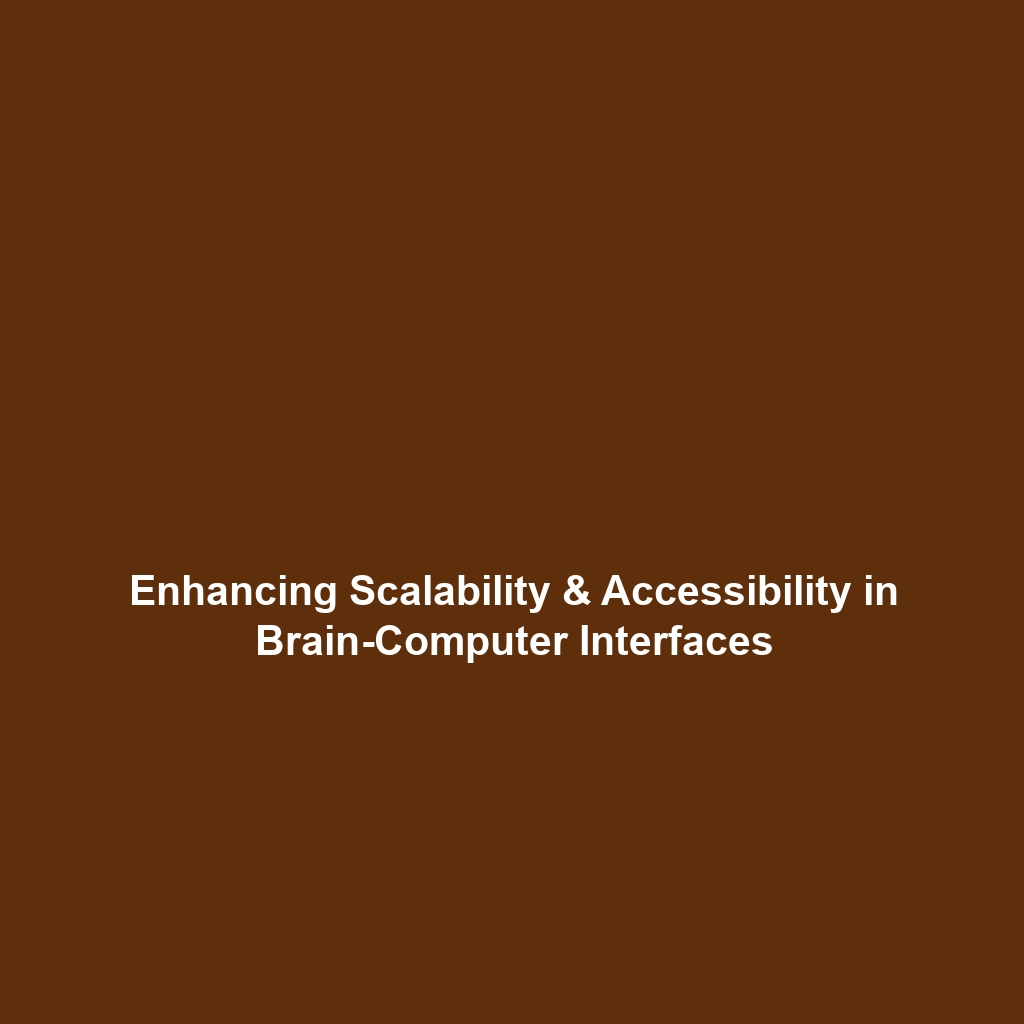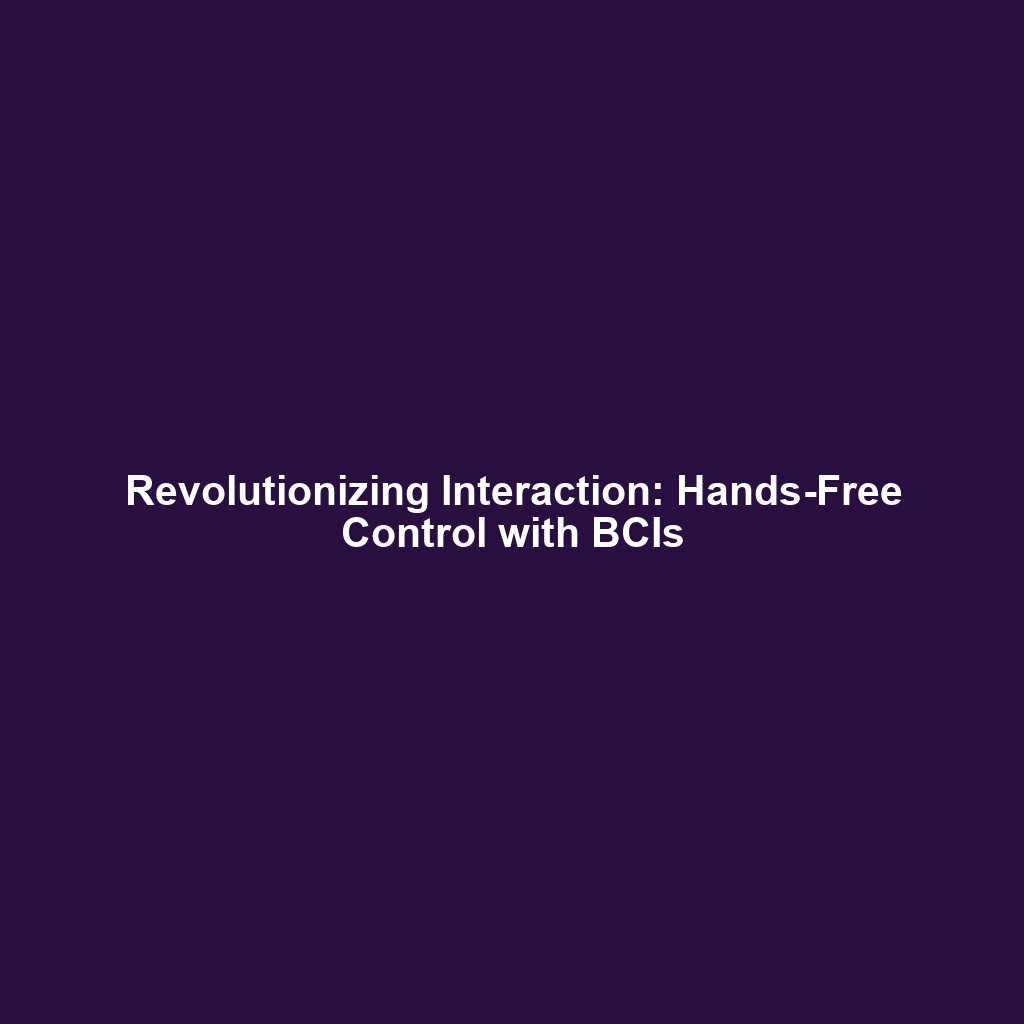Scalability and Accessibility in Brain-Computer Interfaces
Introduction
Scalability and accessibility are pivotal concepts in the rapidly evolving field of Brain-Computer Interfaces (BCIs).
They determine how effectively these technologies can adapt to different user needs and environments while ensuring the
maximum number of people can benefit from them. Scalability relates to the system’s ability to grow and accommodate
larger populations or more complex tasks, while accessibility focuses on making these systems usable for individuals with
diverse abilities. Together, they play a significant role in advancing the inclusivity and functionality of BCIs,
transforming them from niche technologies to tools for widespread societal impact.
Key Concepts
Understanding Scalability
Scalability in Brain-Computer Interfaces refers to the ability of BCI systems to function effectively as demand
increases or as more users interact with the technology. Key principles include:
- Modular designs that allow for incremental upgrades.
- Efficient data processing to handle larger inputs.
- Networking capabilities that enable multi-user environments.
Insights into Accessibility
Accessibility ensures that Brain-Computer Interfaces can be designed for individuals with varying levels of
ability, including those with disabilities. Important aspects of accessibility include:
- User-centric design, considering cognitive and physical capabilities.
- Affordability and availability of BCI technologies to underserved populations.
- Easy integration with existing technologies and platforms.
Applications and Real-World Uses
The applications of scalability and accessibility within Brain-Computer Interfaces are both innovative and wide-ranging.
Some notable examples include:
- Assistive Technologies: BCIs that help individuals with paralysis control devices through thought alone.
- Gaming: Gaming platforms that adapt to player abilities, providing enjoyable experiences for a wider audience.
- Education: Tools that allow students with learning disabilities to engage more effectively in learning environments.
These applications highlight how scalability and accessibility interplay to enhance user experience and reach.
Current Challenges
Despite the progress, several challenges hinder the advancement of scalability and accessibility in Brain-Computer
Interfaces:
- High cost of technology limits widespread adoption.
- Data privacy concerns related to brain data collection.
- Complexity of user training and interface navigation.
- Technical limitations in reliably interpreting neural signals.
Future Research and Innovations
The future of Brain-Computer Interfaces holds exciting innovations that could reshape the landscape of scalability and
accessibility:
- Advancements in AI-driven algorithms for better signal interpretation.
- Emergence of more affordable and portable BCI technologies.
- Research into neuroplasticity to improve user adaptability and learning.
These breakthroughs are essential for ensuring that BCIs remain relevant and accessible to a diverse population in the years to come.
Conclusion
In summary, the concepts of scalability and accessibility are vital to the progression of Brain-Computer Interfaces,
determining their effectiveness and reach. Continued research and innovation will be crucial in overcoming existing challenges.
To stay updated on more revelations in the field of BCIs, explore our resources on related topics, and consider the impact
of these technologies on future societies.
Learn more about Brain-Computer Interfaces




